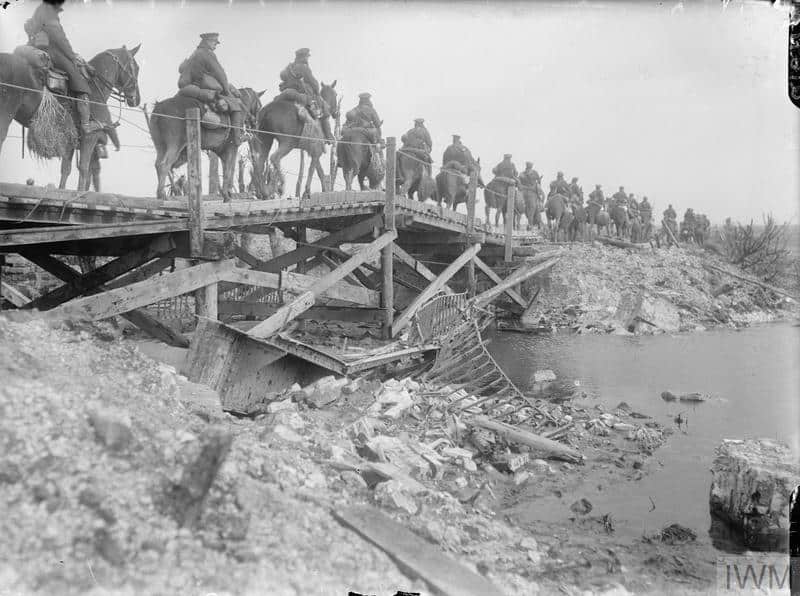Selle
The hardest-fought of the final offensive actions. First, Third and Fourth Armies exploited their success in breaking the Hindenburg Line by pushing on across the Rivers Selle and Sambre, recapturing Valenciennes and finally in liberating Mons – where it had all begun for the British Expeditionary Force more than four years before.
The Honour was awarded to the 3rd Hussars.
Sambre
The hardest-fought of the final offensive actions. First, Third and Fourth Armies exploited their success in breaking the Hindenburg Line by pushing on across the Rivers Selle and Sambre, recapturing Valenciennes and finally in liberating Mons – where it had all begun for the British Expeditionary Force more than four years before.
The Honour was awarded to the 3rd Hussars.
Detail
Selle
After the Battle of Cambrai, the allies advanced almost 2 miles and liberated the French towns of Naves and Thun-Saint-Martin.
Although the capture of Cambrai was achieved significantly quicker than expected and with moderately low casualties, German resistance northeast of the town stiffened.
By 11 October, the Fourth Army had closed upon the retreating Germans near Le Cateau, with the Germans taking up a new position, immediately to the east of the Selle River.
After a six-day halt for preparations and artillery bombardments, Fourth Army troops attacked at 5.20 am on Thursday 17 October. Infantry and tanks, preceded by a creeping barrage, moved forward on a 10 miles front south of Le Cateau.
The centre and left of the Fourth Army forced crossings of the river, despite unexpectedly strong German resistance and much uncut barbed wire.
Fighting was particularly fierce along the line of the Le Cateau–Wassigny railway. The right of the attack, across the upland watershed of the Selle, made the most progress and by nightfall, the German defences had been broken and Le Cateau captured.
Fighting continued from 18–19 October, by which time Fourth Army, much assisted by the French First Army on its right, advanced over 5 miles, harrying the Germans back towards the Sambre–Oise Canal.
Sambre
At the front, German resistance was falling away. Unprecedented numbers of prisoners were taken in the Battle of the Selle, and a new attack was quickly prepared. At dawn on 4 November, 17 British and 11 French divisions headed the attack.
The Tank Corps, its resources badly stretched, could provide only 37 tanks for support. At dawn on 4 November, 17 British and 11 French divisions headed the attack.


